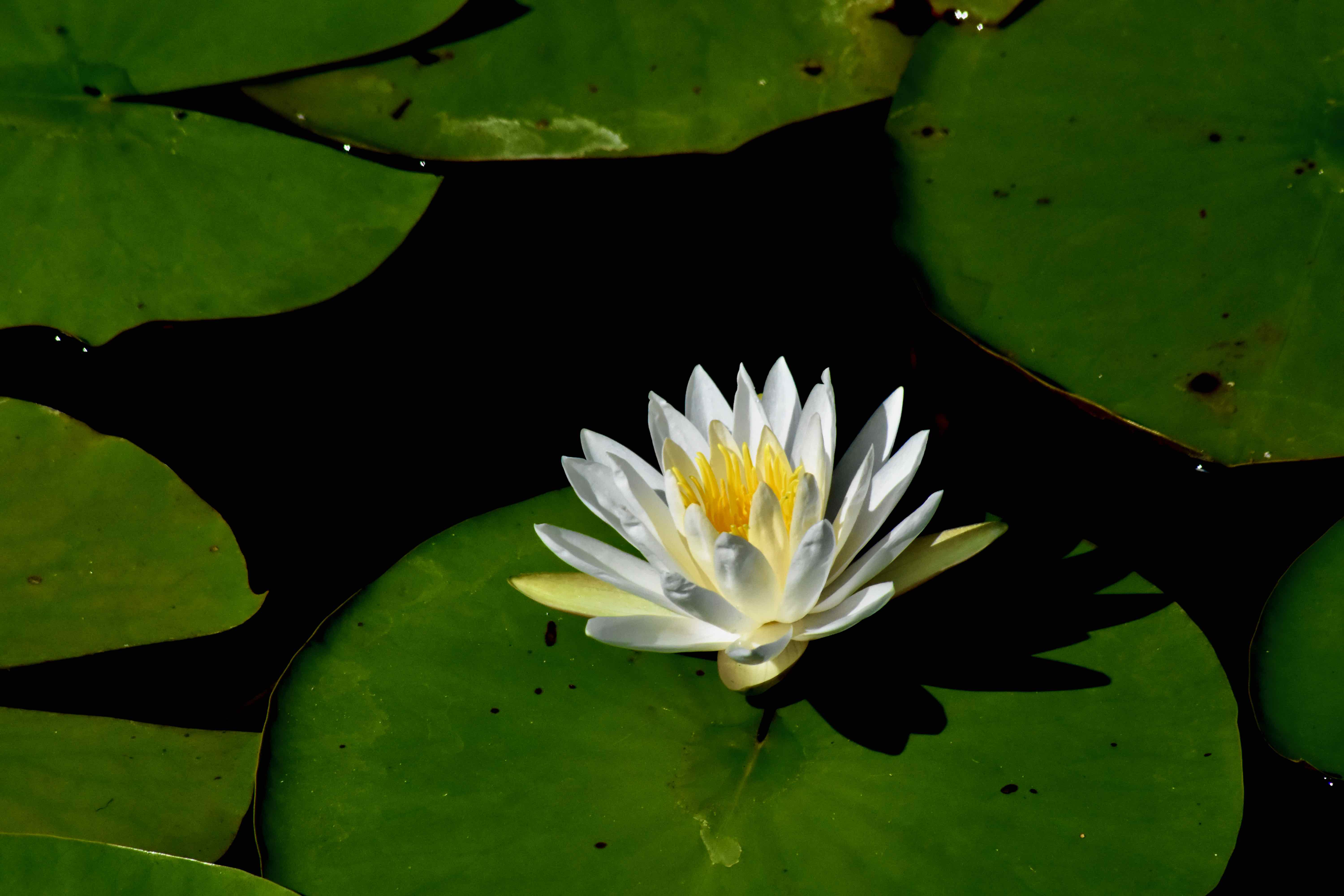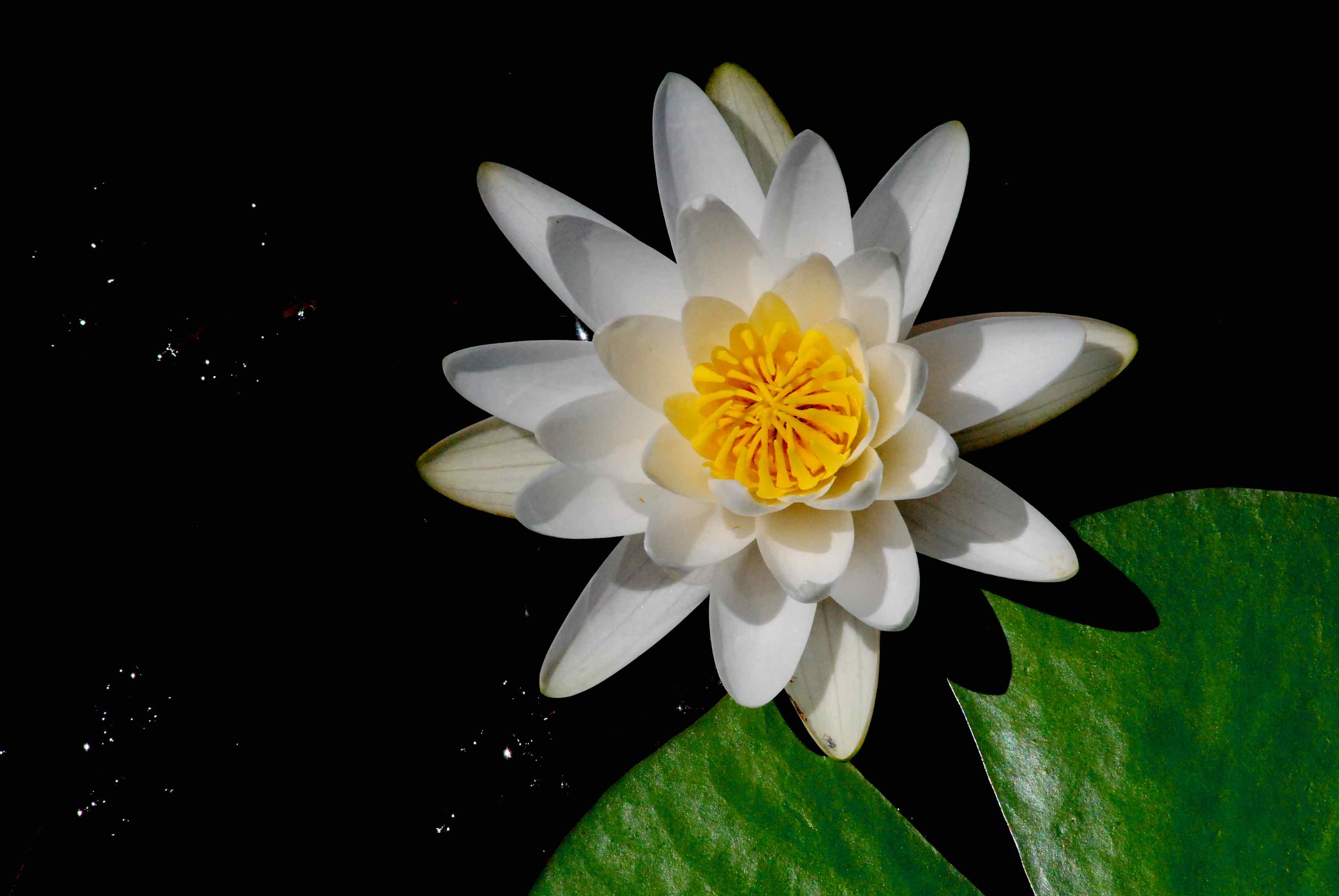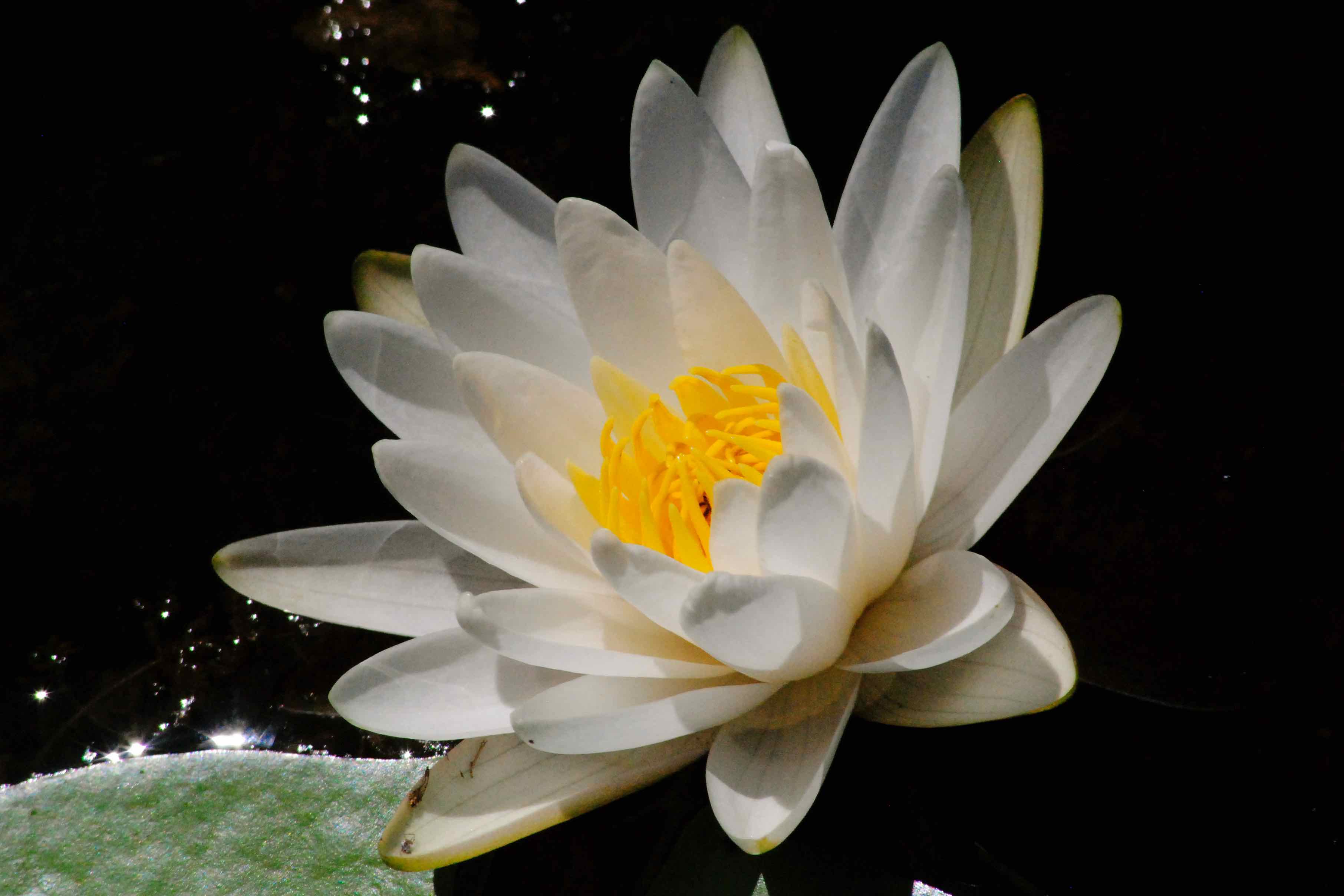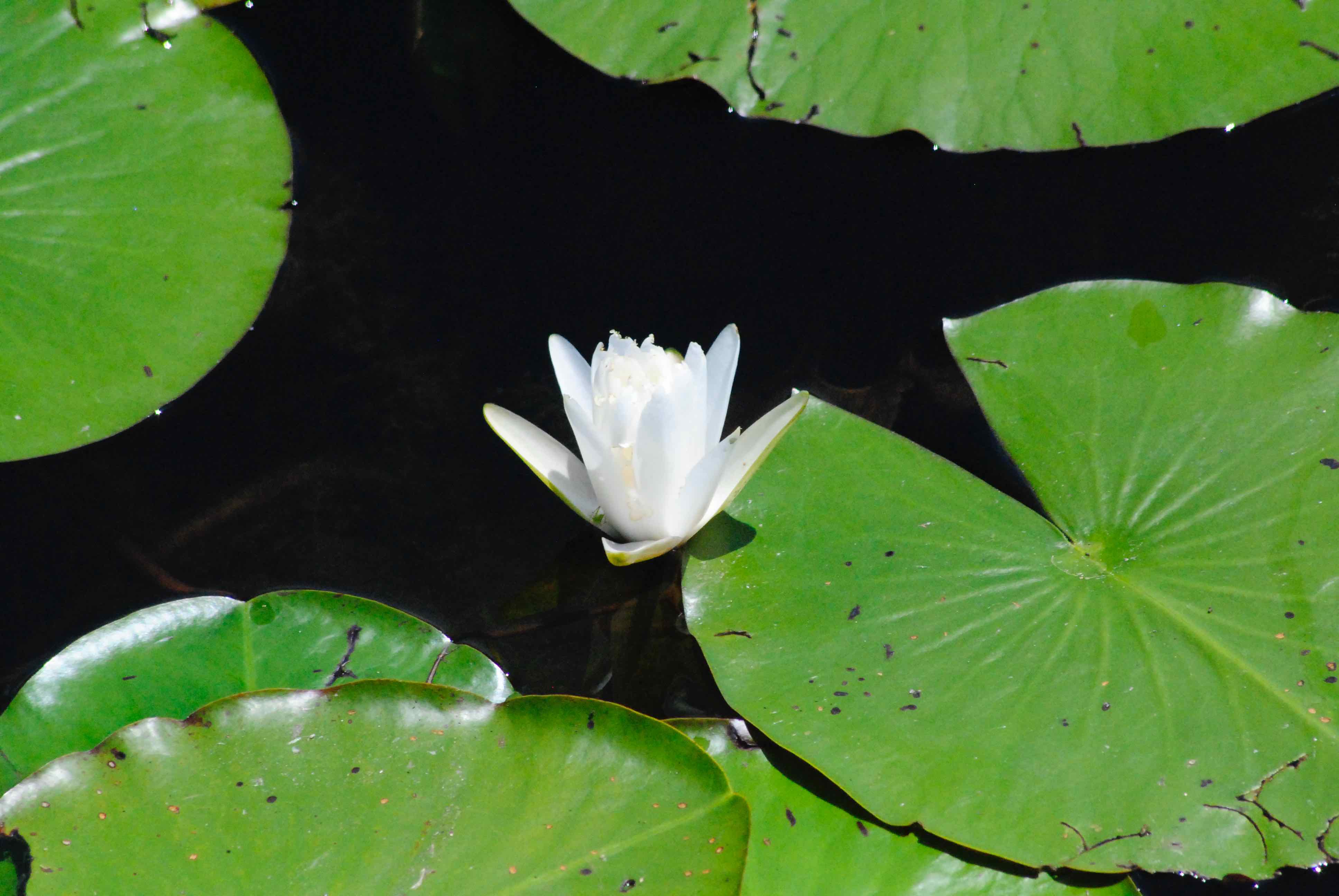
American white waterlily, photographed at Long Key Nature Center, Davie, Broward County, in May 2016.
There are about 40 species of waterlily in the world. This waterlily, known as the fragrant or American White waterlily, Nymphaea odorata, is the most abundant in North America.
While some members of the clan specialize in tropical climes or are found only in northern latitudes, this guy is a generalist. You'd be hard pressed to throw a dart at a map of North America and not hit a place where it's found. Fragrant waterlily's range extends from Alaska to Puerto Rico and from California to Quebec. It's also found throughout the Caribbean, through Mexico and Central America to northern South America.
It is a Florida native found in nearly all of the Sunshine State's 67 counties. Another native waterlily found in Florida is the yellow water lily, Nymphaea mexicana, which is rare here but common elsewhere. The difference between the two can be found in their common names.
The leaves of the fragrant waterlily are large, about 10 inches in diameter and nearly circular, with a slit that goes almost to the center. The flowers are large and showy, open in the morning and close by afternoon. They bloom year round.
Spatterdock, a somewhat similar-looking aquatic plant, is sometimes confused with waterlilies. Spatterdock, however, has heart-shaped leaves with no center slit and a round, yellow flower that looks like it's not quite open. The flower is also smaller. Spatterdock, however, is a member of Nymphaeaceae, the waterlily family.
While the leaves and flowers of fragrant waterlily appear to float freely in the water, the plant is actually rooted to the bottom via rhizomes, or below-the-surface stems. Fragrant waterlily can live in water as shallow as a foot or as deep as six feet. It cannot tolerate drought or salt. Leaf stalks have four passages for movement of gases from the leaves to the rhizomes. The rhizomes themselves are food for some animals, particularly muskrats.
Fragrant water lily is considered to be an introduced plant in western states, including Arizona, California, Oregon, Washington, Idaho, New Mexico, Montana, Utah, and Nevada. In Washingston state, fragrant water lily and water lilies generally are classified as noxious weeds. Fun fact: The young leaves, flowerheads and seeds of waterlilies are edible. In Egypt and the west coast of Africa, the seeds are ground into flour.
Other names include American white waterlily, American waterlily, alligator's bonnet, American white water-lily, fragrant white water-lily, fragrant water-lily, white water-lily, sweet-scented white water-lily, sweet-scented water-lily and beaver root.
Click on photo for larger image
Links for Fragrant Waterlily / American White Waterlily



